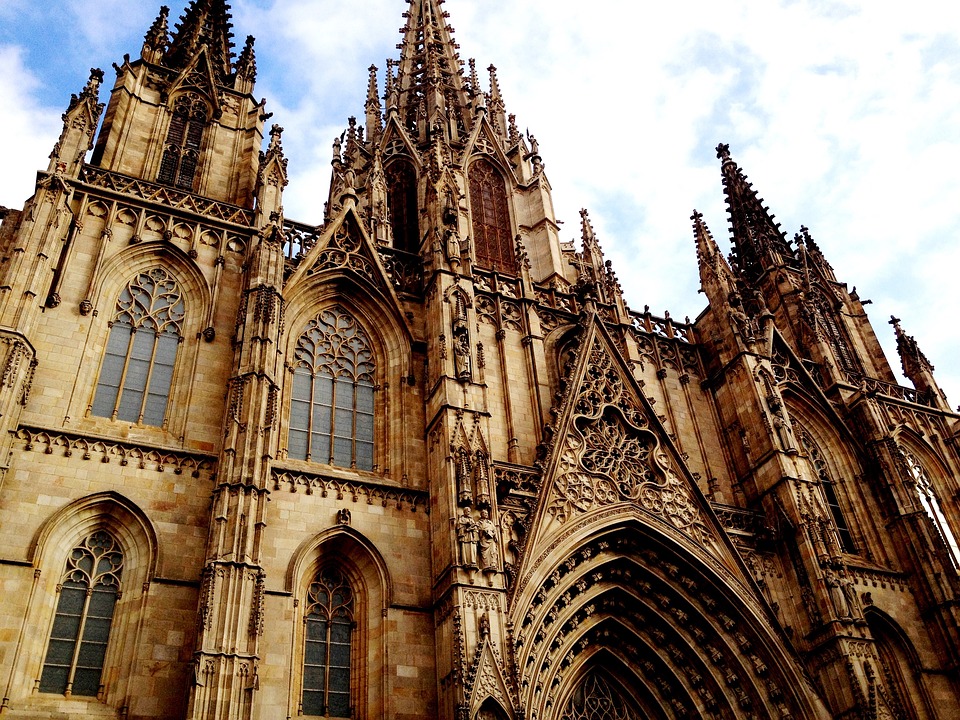The city of Barcelona is known for its historical, cultural and architectural charm. But perhaps for that very reason, it’s also chock full of events, characters and whispered traditions that belong to its ‘unofficial history’. Want to know more about some genuine Barcelona legends? Here, we’ll tell you a few of our favourites.
The 13 geese of Barcelona Cathedral
According to legend, one of the patrons of the city, Saint Eulalia, kept geese in her teenage years. At just thirteen, she was asked to renounce her Christian faith. Holding firm to her beliefs, she was sentenced to thirteen martyrdoms, eventually culminating in her crucifixion. This was what elevated her to sainthood after her death. Saint Eulalia was then buried in Barcelona Cathedral and, in her memory, in the cloister, thirteen geese were left to roam and guard the palace. Legend has it that if any one of the geese — which are maintained by the church — were to die or go missing, the cathedral would crumble…
El Botxí and Casa del Verdugo
In Roman times, soldiers charged with executing the city’s criminals lived on this exact spot. In the Middle Ages, however, the authorities decided a figure officially dedicated to this task was necessary. He would be known as El Botxí. Many butchers, due to their obvious skills with knives, took on the task, albeit somewhat reluctantly. Nobody really wanted the job and El Botxí and his home, Casa del Verdugo, weren’t exactly desirable neighbours. In fact, Casa del Verdugo, or the Executioner’s House, was literally built on the city walls, neither inside nor outside the settlement, so as not to have anyone directly next door. Legend says the local tailors didn’t want to go anywhere near the executioners, that’s why they dressed in jackets tied with rope. Another legend also has it that they traded with the bones and remains of the executed for elaborate ointments and remedies.
Barcelona legends: Gaudí’s astrological symbolism
One of the best-known and most recognized architects in Barcelona, Catalonia, even throughout the world, is Antoni Gaudí. All his work is full of symbolism, both religious and the more esoteric. His seven most famous creations in the city of Barcelona, — Palacio Güell, Casa Batlló, La Pedrera, Casa Vicens, Casa Calvet, Sagrada Familia and Parque Güell — when viewed from above combine to make up the exact same shape as the Ursa Major constellation. The meaning of this arrangement and the motives for imitating heaven on Earth have given rise to numerous legends and theories, and inspired many writers over the years.
Ghosts in the Iglesia de los Santos Just y Pastor church
Legend has it that, in Roman times, a pagan temple dedicated to Mithras could be found where this particular church now stands. Mithraic cults would use and abuse their sacrifices here. On the exact same spot, it’s said there was the Well of Sacrifices, where the lifeless bodies of Christians who died as martyrs were dumped. Unable to access the bodies because the well was so deep, relatives excavated a number of galleries around the site. These galleries were transformed into catacombs, the scenes of Paleo-Christian rites.
By the time Christianity arrived in the city and the church was built, a cemetery was opened just next door. The cemetery had to be boarded up because it was said that ancient victims of the well would appear in the night, having wandered from the catacombs onto the city’s streets…













